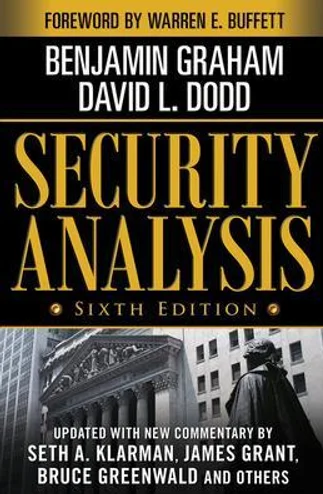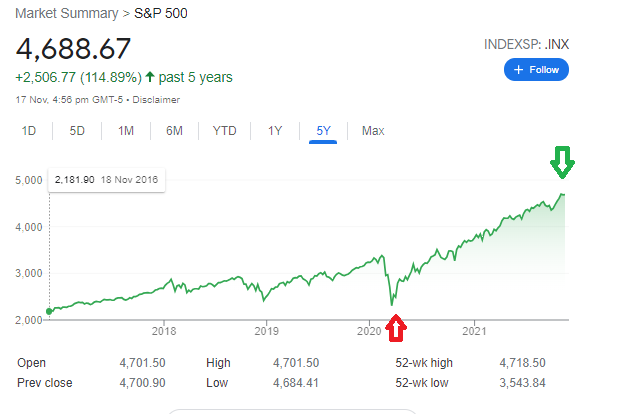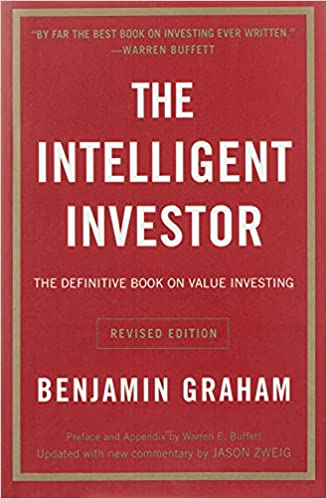DISCLAIMER: This is not an investment advice. You should not make your investment decisions based on this post. Its intent is educative and informative only.
In this post, I will share with you a little bit of investment principles that I follow.
I’ve been investing in the stock market for a couple of years, and to be honest, I don’t think you need to a genius to succeed there.

In fact, I dare to say that the stock market is 80% emotional control and 20% technique.
If you trade stocks using your emotions, you are probably going to lose money (sorry, day-traders!).
On the other hand, if you are patient and disciplined, you just need to study a little bit to understand the market principles and focus on building a good portfolio.
Which method do I use for stock investing?
Among several existing methods, I am a big fan of the “value investing” methodology. Have you ever heard about it?
The first review of concept started back in 1934, when Benjamim Graham and David Dood published the book Security Analysis.

Fifteen years later, in 1949, Benjamin Graham published the Intelligent Investor, which is considered by many specialists the bible of investments. The book has numerous fans around the world, including the biggest investor of all times – Warren Buffet.
Author’s note: I read this book and it is great book to start your investment pathway. There are some concepts that need to be adapted to the current days, but this is like “investing 101” for those who want to start using value investing.
How value investing works?
Value investors are always seeking opportunities to find mispriced shares. And what does that mean?
It means that they are trying to pay 50, 60, 70 cents (price) for something that is worth one dollar (value).
A good deal, isn’t it? The mantra of value investing is “price is what you pay, and value is what you get” (bear this in mind forever – it is important for all transactions that you make in life).
Overall, the stock market is extremely sentimental and tends to overreact to announcements (good and bad news), which might create crazy price incongruencies and excellent opportunities.
This is normally compounded with the human being greediness and desire to become rich instantly.
Examples?
a) read about the “.com” bubble in late 90s / early 2000s. (check this short article)
b) Great Financial Crisis (GFC) in 2008/2009
b) COVID-19 stock market crash last year – check the most famous stock market index (SP&500) in March/2020 and nowadays in the graph below (I am writing this article in early November/2021). There was a huge window of opportunity in March/April 2020, when there was a massive “selling off” season.

Author’s note: I aggressively bought stocks during April and August of 2020 – peak of COVID-19 uncertainty. I should have bought more!
The thing is – The majority of investors are driven by fear or euphory (dangerous emotions to deal with while investing).
When prices are going down, people tend to panic and hit the “sell” button without thinking too much. They just want to see their portfolio stop bleeding.
On the other hand, in euphoric moments investors forget about all the basic mathematic lessons and start to convince themselves that “1+1 = 5” (it is crazy!).
If you want to succeed in stock investing, you will have to “wrong way” many times, which requires a lot of courage – when people do zig, you need to zag!

How do you know whether a stock is undervalued?
There are several ways of doing this. Overall, there are 02 major valuation categories:
a) Absolute Valuation – This is where you try to find the company intrinsic value assessing company fundamentals (its balance sheet, cashflow, growth plans, past results, management, etc.).
Within the absolute valuation category, I would highlight the Discounted Cash Flow (DCF) method. Taking the risk of oversimplyfing the concept, the DCF models will gauge company’s capacity to generate future cash and valuate the company according to it (in essence, the higher your capacity to generate cash, the more valuable the stock should be).
b) Relative Valuation – Alternatively, in the relative valuation method you will assess companies from the same sector/niche using ratios, such as Price-to-Earnings (P/E-ratio), Enterprise Value-to-EBITDA (EV/EBTDA), Price-to-Book Ratio (P/B), and others.
If you are keen on further understanding these concepts, I highly advise you reading one of Aswath Damodaran Valuation books. I read a couple of them and they gave me really good insights on how to assess my investments.
If you don’t like reading, he also has free lessons in Youtube (link) – they are great!
Which valuation technique do I use?
While I think the DCF is great, I think it’s almost an art. You need to be constantly practicing it and refining your techniques to get better results. Unfortunately, I don’t have time to build financial models and spend too much time in excel spreadsheets.
My valuations are mostly based on multiples and a quick pre-analysis filter that I do using yahoo finance. The table below the top-5 important multiples that I use when assessing a stock.

These multiples are pretty simple to set up in yahoo finance.
Yahoo Finance – Step-by-Step configuration
A quick step-by-step is detailed below:
- Google “equity screener yahoo” and open the yahoo’s equity screener.
- Press “add another filter” and select the multiples detailed above.

3. Set up the filters in accordance with your preference (note: the numbers detailed in the table above are indicative only. You should review them according to your investment strategy).

4. Yahoo Finance doesn’t have the ROIC as a filter, unfortunately. I use quickfs.net to check the ROIC for the companies I am interested in.
5. Quickfs is pretty straightforward as well – type the code of the company you want to check the indicators, and it will show you an excellent historical summary (i.e. I am using ASX:BHP).

The Qualitative Review
If a stock successfully pass the criteria set up in the table (quantitative criteria), I will undertake its qualitative review. This includes:
a) Review of its market niche (i.e. is this an oil company, mining conglomerate, a manufacturer, or a tech company? Do I believe in this niche? Is it a sustainable niche?)
The questions are very relevant and should consider when assessing your investment. For example, BHP is a great company, but I would be extremely conservative to invest on them. The majority of their revenue is related to commodities (i.e. iron ore), which are considered volatile.
That is why you can see a considerable Earnings Per Share, ROIC and ROE fluctuation. I am not a big fan of companies with these characteristics.
b) What are their planning for the future (i.e. what are the projects that the company is investing? For example, I would NEVER invest in a company that does not invest on online initiatives for its business. You can find information about the management initiatives by reading their annual report)
c) I finally undertake another layer of financial review, where I assess its financial fundamentals (balance sheet, cash flow statements, income statements, etc. – I normally use quickfs and simplwallstreet for this).
If after the quantitative analysis and qualitative review I am satisfied with what I see, I buy the share and “forget” about it.
After I bought, I don’t care about share price anymore, I only spend time assessing their future plans (qualitative) and financial fundamentals (quantitative).
I will only sell that share when a significant negative change happens (i.e. they announce an expansion plan that does not make sense – imagine the company you invested in tells the market that they are going to invest 100% of their capital in coal mines?).
Apart from this, I tend to hold the stocks for a long period of time. I don’t mind a bad result once in a while – it is actually part of the game and normally a good opportunity to increase your exposure in that stock, if you believe in its business.
The disadvantages of this method
This method is very robust and I have applied it successfully so far. However, it is a conservative method and it will suit better mature companies in stable sectors (energy, retail, utilities, etc.).
It would be difficult to find a tech company using these metrics, as they tend to trade at more aggressive indicators.
I am “ok” with that, since I tend to me more conservative in the stock market. If you want to be more aggressive, I highly recommend studying valuation and discounted cash flow methodology in detail.
The importance of diversification and portfolio management
I like to diversify my portfolio – at the moment, I have shares of more than 40 companies across the world (20 in Australia and approximately 20 in emerging markets).
It is very important to diversify and avoid huge concentration in one asset, region or sector.
Particularly, I am a big fan of the following sectors: energy, retail, internet/technology, real estate, finance (banks and insurance) and I tend to invest in these niches in different parts of the world. I will post about my portfolio breakdown another time with more details and the techniques that I use for portfolio management.
To wrap up…
The stock market is great way to generate passive income and help you to achieve your financial independence.
If you are into the FIRE movement, you should definitely have part of your portfolio invested in stocks.
You don’t need to be a genius to make good investments, but you do need to be very resilient, patient and dedicate some time for research and studies.
I would like to highlight that I don’t think you will become rich in the stock market in the short term, but it can definitely help to speed up process in long term. What does it mean?
- Don’t expect to double your portfolio value in one year – If you buy a good suite of stocks at reasonable prices and let time pass (years), you will probably see the benefits of value appreciation and dividends.
- Before spending too much time on the stock market with little money (couple of hundreds of dollars), focus first on ways to increase your income so that you can have a significant amount to invest.
Don’t get me wrong, everyone needs to start from somewhere and I do think that you should think start investing slowly (investing couple of hundreds/thousand dollars).
“You will not become rich investing – Investing is looking after and preserving your assets. If you want to be rich, you need to work hard.”
My point is don’t waste too much time in the front of the stock broker app or reading all the books if you barely have money to invest – focus first on building your savings.
What about you? Do you also invest in stocks? Hope this post helps you somehow.





